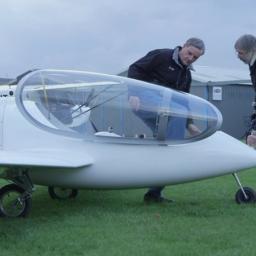Boeing developing experimental hybrid-electric aircraft
 Researchers from the University of Cambridge, in association with Boeing, tested the first aircraft to be powered by a parallel hybrid-electric propulsion system, where an electric motor and petrol engine work together to drive the propeller. The demonstrator aircraft uses up to 30 per cent less fuel than a comparable plane with a petrol-only engine. The aircraft is also able to recharge its batteries in flight.
Researchers from the University of Cambridge, in association with Boeing, tested the first aircraft to be powered by a parallel hybrid-electric propulsion system, where an electric motor and petrol engine work together to drive the propeller. The demonstrator aircraft uses up to 30 per cent less fuel than a comparable plane with a petrol-only engine. The aircraft is also able to recharge its batteries in flight.Though increasingly common in the automotive industry, the technology has never before been brought to the aerospace sector. During take-off and climb, when maximum power is required, the engine and motor work together to power the plane, but once cruising height is reached, the electric motor can be switched into generator mode to recharge the batteries or used in motor assist mode to minimise fuel consumption. The same principle at work in a hybrid car.
There are of course the exceptions such as Quito where the altitude makes the take off run longer, or of course very hot places like Vegas in the summer where sometimes low power GA aircraft like the Piper J3 have to take off before sunrise.
I do not think the size of electric motors that could drive the wheels of a large jet would have significant impact on takeoff distance. I do think that they would be good for taxi purposes, but since the jets need to be spun up anyway there would probably be little gain of economy.
BSDGuy